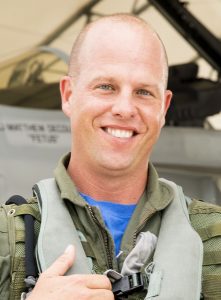
Six days after commissioning, the crew of USS Gerald R. Ford (CVN-78) launched and recovered their first aircraft from the carrier’s flight deck, according to a statement from the service.
The recovery of the F/A-18F Super Hornet from the Navy’s Air Test and Evaluation Squadron VX- 23 occurred at 3:10 P.M. EST off the coast of Virginia.
Lt. Cmdr. Jamie “Coach” Struck’s Super Hornet hit the number two wire on the Advanced Arresting Gear systems and then launched a little more than an hour later using the ship’s electromagnetic launch system (EMALS).

The test came as a surprise to many naval observers who expected the first arrested landing on Ford to come sometime next week.
“AAG and EMALS have been successfully tested ashore at Lakehurst, New Jersey, but this is the first shipboard recovery and launch of a fleet fixed wing aircraft,” said Capt. Rick McCormack, Ford’s commanding officer, said in a statement.
“My team has worked closely with industry, Naval Air Systems Command (NAVAIR), and the flight test community.”
The successful test comes days after the Navy said it had worked through a software issue with the EMALS system and after years of delays in both the General Atomics-built systems. Design problems with the AAG pushed the testing program back two years before the contractor and the Navy could find an acceptable fix.
“I could not be more proud of the men and women who, for the better part of the last two decades, have worked to bring these new technologies to the fleet,” said Capt. Stephen Tedford, program manager, said in a statement.
“Their perseverance and dedication to service have made this day possible.”
The following is the complete July 28, 2017 statement from the service on the recovery and launch tests.
USS GERALD R. FORD COMPLETES FIRST ARRESTED LANDING AND LAUNCH
Less than one week after Pres. Donald J. Trump commissioned the U.S. Navy’s newest aircraft carrier, USS Gerald R. Ford (CVN 78) launched and recovered its first fixed-wing aircraft July 28, 2017off the coast of Virginia. The first arrested landing, or “trap”, occurred at 3:10 PM (EST) and the first catapult launch happened at 4:37 PM (EST).
Lt. Cmdr. Jamie Struck of Tallmedge, Ohio piloted the F/A-18F Superhornet from Air Test and Evaluation Squadron (VX) 23 based at Patuxent River, Maryland.
The Superhornet caught the number 2 arresting wire of Ford’s advanced arresting gear (AAG) system, and was launched from catapult 1 using the electromagnetic launch system (EMALS).
“Today, USS Gerald R. Ford made history with the successful landing and launching of aircraft from VX-23 using the AAG and EMALS,” said Adm. Phil Davidson, commander, U.S. Fleet Forces. “Great work by the Ford team and all the engineers who have worked hard to get the ship ready for this milestone.”
“AAG and EMALS have been successfully tested ashore at Lakehurst, New Jersey, but this is the first shipboard recovery and launch of a fleet fixed wing aircraft,” said Capt. Rick McCormack, Ford’s commanding officer.
“My team has worked closely with industry, Naval Air Systems Command (NAVAIR), and the flight test community to make this historic event in Naval aviation happen. I am very proud of my crew.”

The software-controlled AAG is a modular, integrated system that consists of energy absorbers, power conditioning equipment and digital controls, with architecture that provides built-in test and diagnostics, resulting in lower maintenance and manpower requirements. AAG is designed to provide higher reliability and safety margins, as well as to allow for the arrestment of a greater range of aircraft and reduce the fatigue impact load to the aircraft.
The mission and function of EMALS remains the same as the traditional steam catapult; however, it employs entirely different technologies. It delivers necessary higher-launch energy capacity, improvements in system maintenance, increased reliability and efficiency, and more accurate end-speed control and smooth acceleration. EMALS is designed to expand the operational capability of the Navy’s future carriers to include all current and future planned carrier aircraft – from lightweight unmanned aircraft to heavy strike fighters.
“I could not be more proud of the men and women who, for the better part of the last two decades, have worked to bring these new technologies to the fleet,” said Capt. Stephen Tedford, program manager. “Their perseverance and dedication to service have made this day possible.”
“My team has worked very hard, together with experts from NAVAIR, Huntington Ingalls Industries, and General Atomics, to test this first-in-class technology,” said Cmdr. Thomas Plott, head of Ford’s air department. “Today is a validation of their dedication and hard work.”






